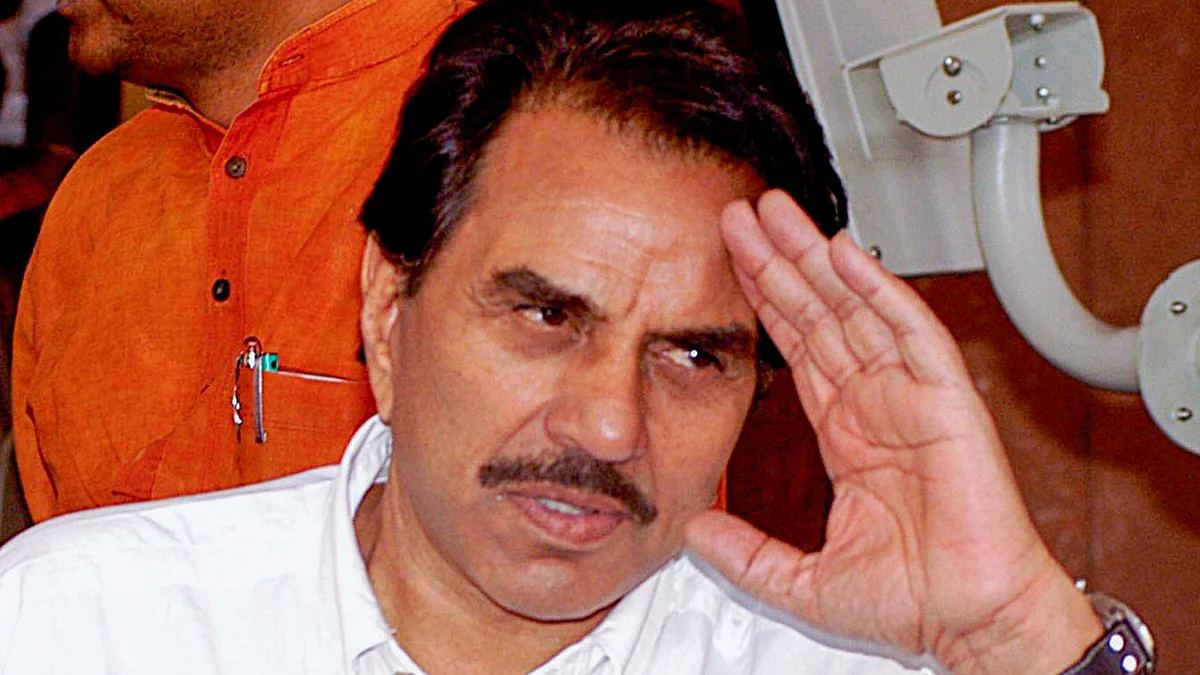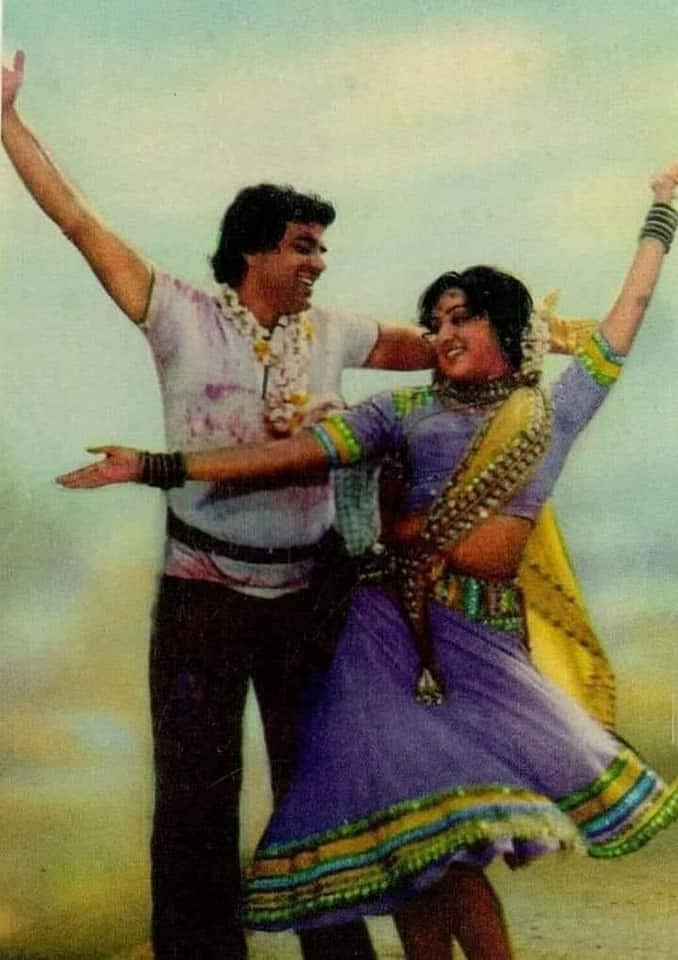Farewell to Dharmendra, a star larger than the screen
His life was a bridge between the innocence of old cinema and the enduring warmth of the human spirit

With the passing of Dharmendra Singh Deol at 89, India has lost not just one of its most iconic film stars but also one of the last embodiments of Hindi cinema’s golden age. Fondly hailed as the 'He-Man' of Bollywood, Dharmendra combined raw masculinity with emotional depth in a way that made him both a hero and a human being. His rugged charm, quiet humility, and effortless versatility helped him traverse generations of viewers — from the black-and-white romance era of the 1960s to the digital dazzle of the 21st century.
Dharmendra was not simply a movie star; he was a feeling — an embodiment of the ideal Indian hero: strong yet tender, brave yet compassionate, a dreamer who never lost sight of his roots.
Born on 8 December 1935 in Nasrali village of Ludhiana district in Punjab, Dharmendra’s early life reflected the simplicity of rural India. His father, Kewal Kishan Singh Deol, was a school headmaster — a grounding influence on the boy who would one day rule millions of hearts. After completing his intermediate studies at Ramgarhia College, Phagwara, in 1952, Dharmendra’s fascination with cinema led him to take a leap of faith.
Inspired by a Filmfare magazine talent hunt by Bimal Roy and Guru Dutt, he got himself photographed at a studio in Malerkotla — a decision that altered the course of his life. His journey from Sahnewal’s dusty lanes to Bombay’s dazzling arc-lights was not an act of chance, but of destiny propelled by determination.
A devoted fan of actress-singer Suraiya, he reportedly walked miles to watch her 1949 film Dillagi over 40 times! His reverence for cinema’s greats endured lifelong — decades later, he was among the few who attended Suraiya’s funeral in 2004, a gesture that reflected his old-world grace and gratitude.
Winning Filmfare’s new talent award opened the doors of the Bombay film industry, leading to his debut in Arjun Hingorani’s Dil Bhi Tera Hum Bhi Tere (1960).
The 1960s saw Dharmendra blossom into the quintessential romantic hero. With his striking looks and understated charm, he starred opposite leading actresses of the era — Mala Sinha (Anpadh, Aankhen), Nanda (Akashdeep), Saira Banu (Ayee Milan Ki Bela), and Nutan (Bandini, Dil Ne Phir Yaad Kiya). His collaborations with Meena Kumari — particularly in Kaajal and Phool Aur Patthar (1966) — proved transformative.
Phool Aur Patthar established him as a solo lead and the nation’s new action hero. It became the year’s biggest box-office success and earned him his first Filmfare Best Actor nomination. The film’s iconic image — Dharmendra baring his chest to rescue an unconscious Meena Kumari — captured the arrival of Bollywood’s new masculine ideal.
But Dharmendra refused to be confined to type. Beneath the 'He-Man' exterior lay a performer of rare sensitivity. His roles in Hrishikesh Mukherjee’s Anupama (1966) and Satyakam (1969) revealed an emotional intensity few could match. Satyakam, in particular, remains one of Indian cinema’s most profound meditations on idealism and integrity.
By the mid-1970s, he had mastered all shades of performance — the comic, the tragic, and the heroic. Films like Chupke Chupke, Dillagi, and Naukar Biwi Ka showcased his effortless humour and timing, securing his reputation as a complete actor.
Dharmendra’s partnership with Hema Malini remains one of Bollywood’s most enchanting on-screen romances. Their chemistry lit up over two dozen films — Seeta Aur Geeta, Raja Jani, Jugnu, Dream Girl, and Charas, among others. Off-screen, their love story became the stuff of legend, culminating in marriage in 1980.

Their most immortal collaboration, however, was Sholay (1975). As the boisterous and endearing Veeru, Dharmendra turned a role of light-hearted mischief into an indelible cultural symbol. Whether confessing love from atop a water tank or bantering with Basanti, he became the soul of India’s most celebrated film. Sholay remains, to this day, the yardstick against which all ensemble blockbusters are measured.
The late 1970s and early ’80s saw him dominate the box office with action hits like Dharam Veer, Katilon Ke Kaatil, Ghazab, and Hukumat — films that reinforced his mass appeal without dimming his credibility.
Off-screen, Dharmendra’s life was as full and layered as his filmography. Married first to Parkash Kaur in 1954, he the father to four children — including actors Sunny and Bobby Deol. With Hema Malini, his second wife, he had two daughters, Esha and Ahana Deol.
A deeply family-oriented man, Dharmendra’s warmth extended into his work. Through his production house Vijayta Films, he launched Sunny Deol in Betaab (1983) and Bobby Deol in Barsaat (1995), both major hits. The banner also produced Ghayal (1990), a hard-hitting action drama that won seven Filmfare Awards and a National Award for Best Popular Film. Later, he introduced his nephew Abhay Deol in Socha Na Tha (2005), nurturing yet another generation of talent.
His later years on screen saw him in character roles that carried both gravitas and humour. Films like Life in a… Metro (2007) and Apne (2007) reaffirmed his emotional connect with audiences. The Yamla Pagla Deewana series celebrated his legacy with affectionate nostalgia, while Rocky Aur Rani Kii Prem Kahani (2023) brought him back to the mainstream, reminding audiences of his enduring charm.
Though he often expressed regret at never having won a Filmfare Best Actor award, Dharmendra’s contribution was acknowledged with the 1997 Filmfare Lifetime Achievement Award. The evening remains etched in memory — when Dilip Kumar, his screen idol, quipped with affection: “When I meet God, I’ll ask why He didn’t make me as handsome as Dharmendra.”
In 2012, the Government of India honoured him with the Padma Bhushan. A brief political stint followed as Member of Parliament from Bikaner (2004–09), though his heart always lay in cinema and poetry.
In his later years, he retreated to his Karjat farmhouse, where he spent his days writing Urdu verse and sharing his reflections online. His poetry, marked by simplicity and longing, offered glimpses of the sensitive soul behind the superstar façade.
Dharmendra’s passing closes a luminous chapter of Indian cinema. He was the bridge between celluloid’s black-and-white idealism and the multicolour chaos of modern Bollywood. His brand of heroism — protective yet gentle, powerful yet humane — feels almost mythical in today’s world of fleeting fame.
He once said, “Main aadmi hoon, farishta nahin” — I am a man, not an angel. Perhaps that was the secret of his magic: his humanity.
As India mourns its beloved 'He-Man', we remember a man who carried the weight of stardom lightly, who loved deeply, and who lived gratefully. Dharmendra’s story was the story of post-Independence India itself — filled with aspiration, resilience, romance, and heart. He may have left the screen, but his silhouette will forever remain — that of a man standing tall against the sunset, smiling with eyes that held both dreams and tenderness.
Dharmendra Singh Deol (24 December 1935 – 24 November 2025) is survived by his wives Parkash Kaur and Hema Malini, six children, and a cinematic legacy that remains an eternal part of India’s collective memory.
Hasnain Naqvi is a former member of the history faculty at St Xavier’s College, Mumbai. You will find more of his writing here
